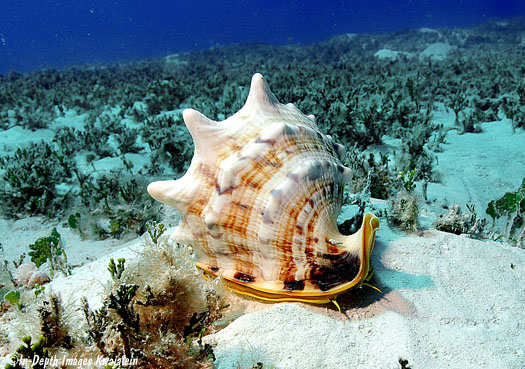
The horned helmet shell is relatively common along sandy lagoon reefs at depths from about 5 to at least 40m. It is one of the largest shelled gastropods at Kwaj, exceeded only by Triton's trumpet Charonia tritonis and possibly the giant finger shell, Lambis truncata. In the latter, we have measured a few Lambis shells a bit longer, but the Cassis is overall larger. Helmet shells are often seen partly buried in sand with only the top of the back and a couple of horns showing. Shells are usually encrusted; some of those below were unusually clean and colorful. The horned helmet eats burrowing echinoids that are plentiful in their typical habitat. Egg masses are clusters of brownish bubbles usually attached to clumps of Halimeda algae.


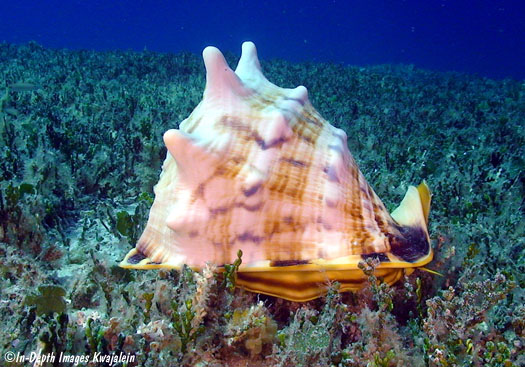
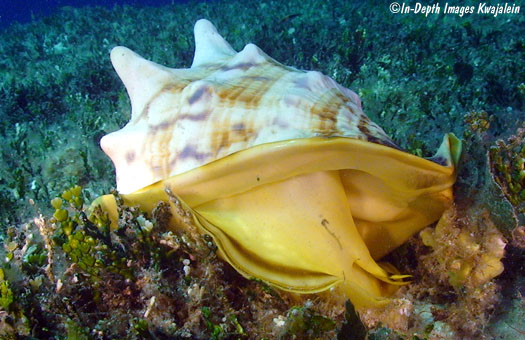
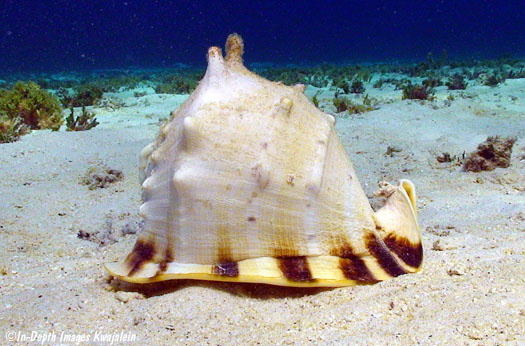
Young specimen, about 75mm.
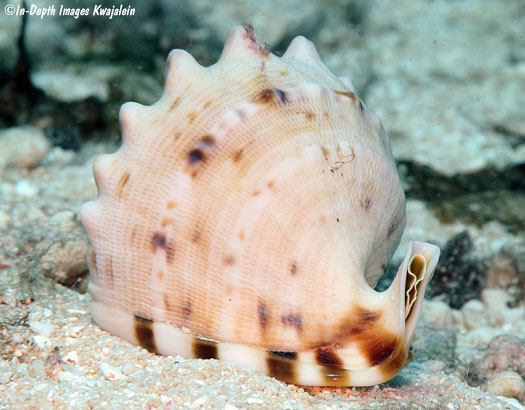
The animal can be quite attractive.
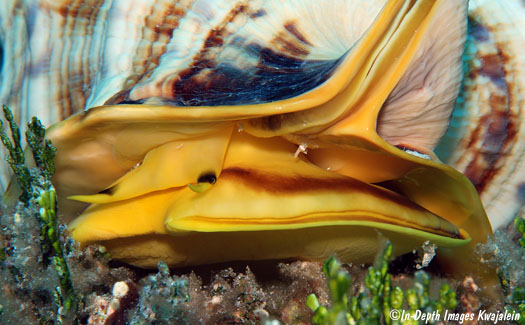
A close shot of the eye and sensory tentacle.
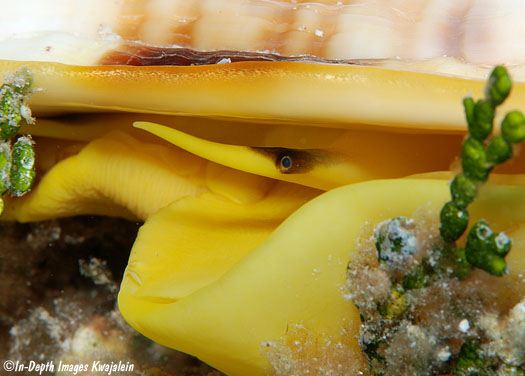
This one has an unusual bifurcated right tentacle.
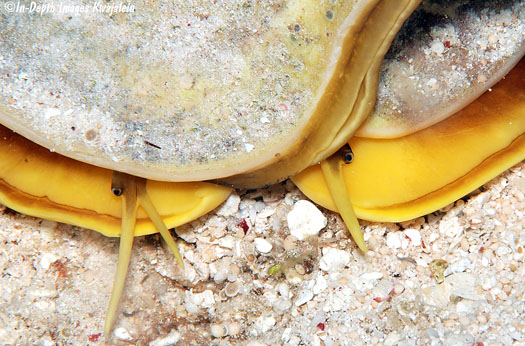
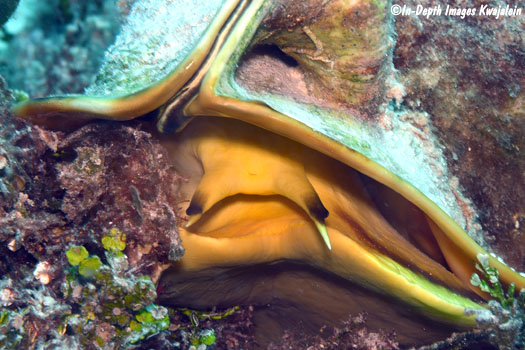
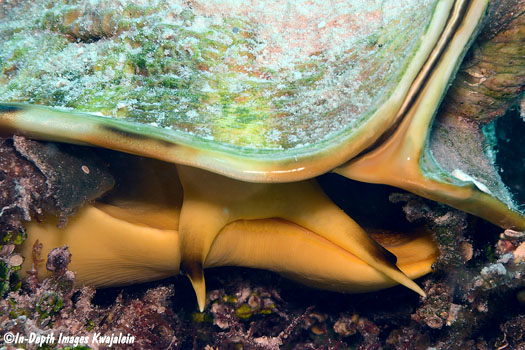
Created 10 January 2011
Updated 11 November 2020